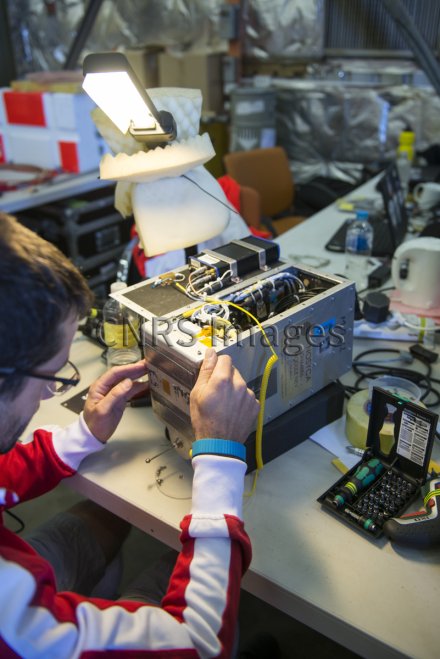Production year
2017

© Sébastien CHASTANET / CNES / OMP / IRAP / UT3 / CNRS Images
20170104_0088
Configuring the radar transponder part of the flight string, in preparation for the PILOT, CLIMAT and CARMEN/CASOLBA missions at the Alice Springs facility in Australia. This operation is performed before each flight, as part of the operational service gondola configuration procedure. The role of the radar transponder is to enable communication with other aircraft. Situated in the core of the flight assembly, the operational service gondola receives and transmits data between the airborne and ground-based segments, and controls the aerostat (stratospheric balloon) in flight. It contains the flight avionics components, including the onboard computers, transponder and ballast container. In particular, these gondolas enable the actuation of gas- or ballast-releasing devices, to control the balloon's ascent and descent. Data received by the control centre on the ground indicates the balloon's position as well as the status of its onboard systems. Measurements are more economical and simpler to perform using stratospheric balloons than using satellites. Balloons are able to gather data that would be impossible to collect using ground-based telescopes, as the Earth's atmosphere partially blocks cosmic radiation.
The use of media visible on the CNRS Images Platform can be granted on request. Any reproduction or representation is forbidden without prior authorization from CNRS Images (except for resources under Creative Commons license).
No modification of an image may be made without the prior consent of CNRS Images.
No use of an image for advertising purposes or distribution to a third party may be made without the prior agreement of CNRS Images.
For more information, please consult our general conditions
2017
Our work is guided by the way scientists question the world around them and we translate their research into images to help people to understand the world better and to awaken their curiosity and wonderment.